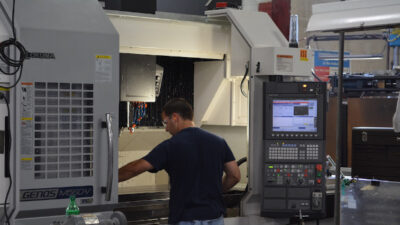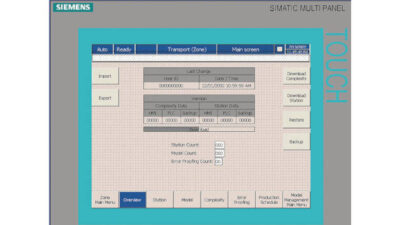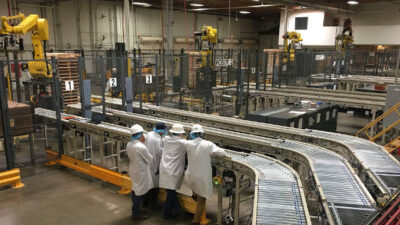When it comes to buying houses, diamonds, computers, and bicycles, it's generally true that, "you get what you pay for." It's much more difficult to place an objective value on a service. The best mechanic in town may be the expensive factory-trained technician at the local dealership or the kid down the block who fixes cars just for fun.
|
When it comes to buying houses, diamonds, computers, and bicycles, it’s generally true that, “you get what you pay for.” It’s much more difficult to place an objective value on a service. The best mechanic in town may be the expensive factory-trained technician at the local dealership or the kid down the block who fixes cars just for fun. High price doesn’t necessarily guarantee good service, nor does a low price prove that a service provider will be inadequate to the task.
This is especially true in the automation industry. High-tech distributors, for example, are valued more for how well they do their job than for how much they charge (see “Do Integrators Really Provide Added Value?” on p. 8). According to Michael E. Workman, professor emeritus of the industrial distribution faculty at Texas A&M University, “Customers want a clear reason to choose a supplier, beyond price.” His research shows that a typical customer’s top 10 expectations are:
-
Easy to do business with;
-
Ready access;
-
Quick response;
-
Timely delivery;
-
Get it right;
-
Time to value;
-
Follow through;
-
Integrity;
-
Know the customer’s business; and
-
Improve the customer’s business.
After all, no amount of cost savings can make a project successful if the service provider fails to meet the customer’s needs.
Furthermore, as system integrator David Dechow, president of Aptura Machine Vision Solutions notes, “Automation projects do sometimes fail or have problems, but mostly in equal proportions relative to whether the bidder was high or low. They usually fail because of poor specification, lazy research or design, incomplete communication, and bad vendor selection by the customer irrespective of pricing.”
Price does matter
Nonetheless, it is only natural for an end-user to want his automation system to be implemented correctly and at the lowest possible cost. That was certainly the hope of Doug Johnson, vice president, Midwest Expanded Metals Inc., when he and his partners started building machines to make custom, expanded-metal blanks-to-size and coils.
“It had taken longer to build the equipment than we’d expected,” says Johnson. “We needed to get up and running as soon as possible. We needed somebody to do the controls for our expanders right away and within a very tight budget.”
Johnson and his partners found a local machine builder that professed specialization in machine design and controls. He notes, “The price was right and we were struggling, so we awarded the job. We simply assumed they could deliver the solution that they had so thoroughly documented.” There were no other bidders.
Price not everything
“Unfortunately, they more-or-less gave up on the project, saying they’d done everything they could and everything we’d asked for,” Johnson adds. He quickly consulted the phone book and found another local system integrator to complete the project—Automation & Control Engineering Ltd. (A&CE).
A&CE’s chief engineer Bob Holman, managed to reprogram the expanders’ existing PCs, providing the required control functions. He charges more, but he makes no apologies for his prices. “Our services aren’t cheap, and we won’t bid on price alone. If I sense that a prospective client is looking for the lowest bidder only, I’ll refer them to other integrators in the area.”
A&CE was worth every penny, notes Johnson. “They made our controls function and function well.” He adds that in, retrospect, “The money was not that important. Who can do the best job is much more critical.” He advises anyone looking to hire a system integrator to focus more on references than rates.
Success, savings
Mike Cox, president and COO of Smart Machines Inc., had a similar experience with an even happier ending. His company was building a custom machine to score and fold sheets of foam into moisture barriers for use in homes. They too were disappointed with the performance of the low bidder they’d hired to implement the machine controls.
“When they gave us a number, we thought we’d hit a home run,” Cox notes. But, when they proved unable to coordinate and control the machine’s sophisticated movements, he admits, “we struck out.” So even though the machine’s end-user had recommended that particular integrator, Cox was forced to find another one to take over the project.
He turned to Integrated Concepts Inc. “I’d used Integrated Concepts for other projects, and I should have used them for this one to begin with,” notes Cox. “They did a good job getting it done for us and figuring out the issues that we had.”
It took another five months for Integrated Concepts to complete the machine’s control system, but they ended up finishing just behind the original schedule, and according to Cox, they saved Smart Machines hundreds of thousands of dollars in the process. The moral of the story, says Cox, is: “Cheap doesn’t always work out. If you already have someone who you know can do the job, you’d better stay with them no matter what their price.”
Real value
Rick Smith, marketing manager at Bachelor Controls, had the opposite experience. “We were once rejected because we were the lowest bidder. The end-user didn’t think we could do the job!” Yet with many successful installations since then, Bachelor Controls continues to prove its worth to the tune of $5 million/year in sales. “We’ve also seen cases where we’ve been underbid,” Smith adds, “but the scope wasn’t the same. The other guys eventually ran the price up to our level with change orders.”
Bob Zeigenfuse, president of Advanced Automation Associates, observes that charging for every minor change is shortsighted. “Change orders are a part of the business, but when they become the rule rather than the exception, it serves to discredit all integrators. The most successful project results are achieved when the client and the integrator form a partnership to define the project scope from the start.” See the graphic: “Four Views of a Planned Project.”
So if price doesn’t determine the value of a system integrator’s services, what does? Wade Freeman, sales manager for Loman Control Systems thinks that “clients want an integrator who is consistently reliable and can provide assurance that their project will be delivered on time and perform as specified. They want to deal with people who have a friendly, positive, and reassuring attitude. They don’t care how much you tell them you know, unless they realize the benefit, the risk reduction, and the profit. They need to know what’s in it for them.”
Pete Kepf, vice president, business development, Automation Consulting Services Inc., agrees. Rather than marketing as the low price vendor, “we position our company as a low risk vendor. We work in a highly consultative environment, so by the time we reach the quotation phase, the customer knows us fairly well and has a high degree of confidence in a quality deliverable.”
Fair price
High or low, every system integration project still needs a price tag. Jason Grahek, vice president and sales manager, Industrial Automation Engineering Inc., explained how his company sets its prices. “First of all, we set an hourly rate that is competitive yet commensurate with our value. We don’t want to go out of business busy. We want an adequate margin to maintain profitability and solidify longevity.”
He adds, “On deriving our price of deliverables, we work on a preliminary design based on the information known at the time. We break down the tasks of the project and base hourly estimates for those tasks based on our experience. We identify the areas of risk and ensure that we have a risk management plan in place and accommodate adequate time to deliver on the promised system.”
Variations on that basic pricing strategy seem to be fairly common among automation system integrators. Jeff Gueble, chief engineer, Crux Engineering LLC, elaborates, “For the labor content, we use two approaches. One is a simple hourly estimate, costed at consulting engineering and technician prices. We also develop a detailed project schedule, which allocates resources in a more human fashion but is costed on actual labor costs, assuming 100% utilization. Generally, the two results are within 10% of each other. We then apply a contingency factor to the materials and a markup to the labor to determine the final price.” See the “Bargain Prices” graphic.
Return on investment
Steve Hechtman, president, Calmetrics Co., offers a long-term perspective on the pricing issue. “Sometimes end-users cringe when they hear our hourly rates, but a competent integrator doesn’t cost at all if he does his work well. In this industry we live in the land of plentiful payback. One customer didn’t understand how to use his refrigeration system and had some settings wrong. It took me five minutes to explain it and save him about $100,000/year in energy costs,” Hechtman says.
Ironically, Calmetrics would not have had the opportunity to demonstrate such dramatic cost savings were they not already on the job. Stan Prutz, president, QDS Systems, has also noticed this Catch-22 situation: “Customers don’t truly come to understand an integrator’s value until they experience it. This appreciation of value develops over time as trust is earned with the successful completion of several projects. With trust and value established, it is not uncommon for the integrator to be trusted to charge fairly and the question of price to stop being asked.”
Unfortunately, such trust is hard to come by, especially for the end-user who has never hired a system integrator before. CSIA Registered Member status certainly helps establish an integrator’s credibility (see “Integrator Registration Aims to Promote Excellence,” Control Engineering , April 2002), and the company profiles in Control Engineering ‘s Automation Integrator Guide can also help identify appropriate candidates for a system integration job. See the listings starting on page 14 or the on-line Integrator Guide at www.controleng.com/integrators .



